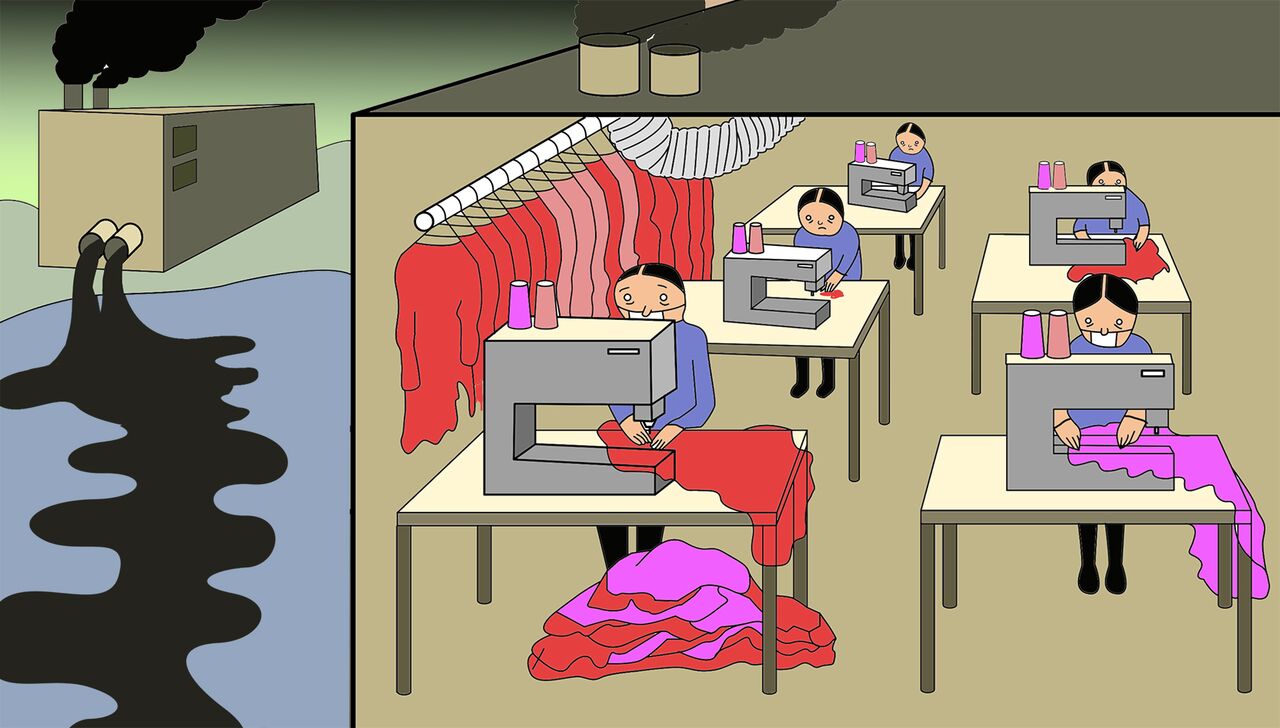How fast fashion negatively affects our environment and how we can do better as consumers
I know that as a student, it is hard to keep up with the fast-changing world of fashion trends that incite our consumerism while on a tight budget. We tend to buy from the stores right around the corner from our homes. It’s close, it’s cheap and it gives us access to more. But, have you ever stopped and thought about how damaging these stores are for the environment?
Fast fashion is characterized by the mass production of clothes and cheap prices, to the extent that some stores have around 52 different seasons every year, according to the documentary The True Cost. That means new clothes coming in every week, which hooks consumers and attracts those who are more money-conscious. It sounds great in theory—I mean, who doesn’t like variety and low prices? However, the reality and the manufacturing ethics behind these products are not so great.
Behind these clothes are starving women and children who work long hours and for little money, according to The Guardian. Not only that, but these workers are abused in order to meet unrealistic deadlines, according to the same article. According to The Independent, these factories mostly operate in Asia and are known for their use of toxic chemicals, large amounts of material waste and contamination of one of the most precious natural resources: water. Large amounts of water. Thus, fueling the overheating of our planet, according to BBC. Since clothes have become even more accessible than before, we buy more, we use less and we waste on a larger scale.
If you are vegan, vegetarian, or pescatarian, you probably already have a grasp on how harmful agriculture is for the environment. But did you know that, according to Forbes, the second largest industrial polluter world-wide is the fashion industry? If you are committed to minimizing your consumption of animal products and you are already interested in being more environmentally conscious, why not apply this living ethic when it comes to shopping?
Montreal is known for its style—I’m sure you know what I mean. The further you wander out of downtown and into the Plateau-Mile End, the more evident this becomes. Thrift shops also start clouding your vision, as there are plenty, and some are really worth checking out. Buying second-hand clothing is an amazing step towards being more sustainable: you help small businesses, you reuse, and it is affordable (unless you’re shopping in the Plateau). Plus, it has its advantage beyond the environmental question—you won’t be wearing what everyone else already is.
Some of my favourite items in my wardrobe have been found in thrift shops, and surprisingly, I purchased them from Value Village. It is a huge store and can be a little overwhelming, but if you have a good eye and some enthusiasm, you will find some valuable treasures. Another one of my favourite thrift stores is definitely Ruse Boutique; it is a consignment store that always has unique pieces from renowned brands at unbeatable prices. If you are not already sold by these two suggestions, you should try Annex Vintage, Cul-de-sac, Citizen Vintage, Eva B, Empire Exchange, Bohême Friperie, or just walk up St. Laurent Blvd.
If thrifting is not your thing, you could start being more conscious when you shop by selecting only products made with recycled materials, non-toxic dyes or organic fabrics. Although these small changes won’t fix the global environmental issue at hand, they do make an impact that multiplies as more people adopt them. If this article sparked anything in you, I would highly encourage you to watch The True Cost (available on Netflix), investigate and stay away from the most damaging mass production brands, like Zara, H&M, and Forever 21. Reusing makes you feel and look better. And more importantly, will help the environment. It’s a win-win situation.
Graphic by @spooky_soda




